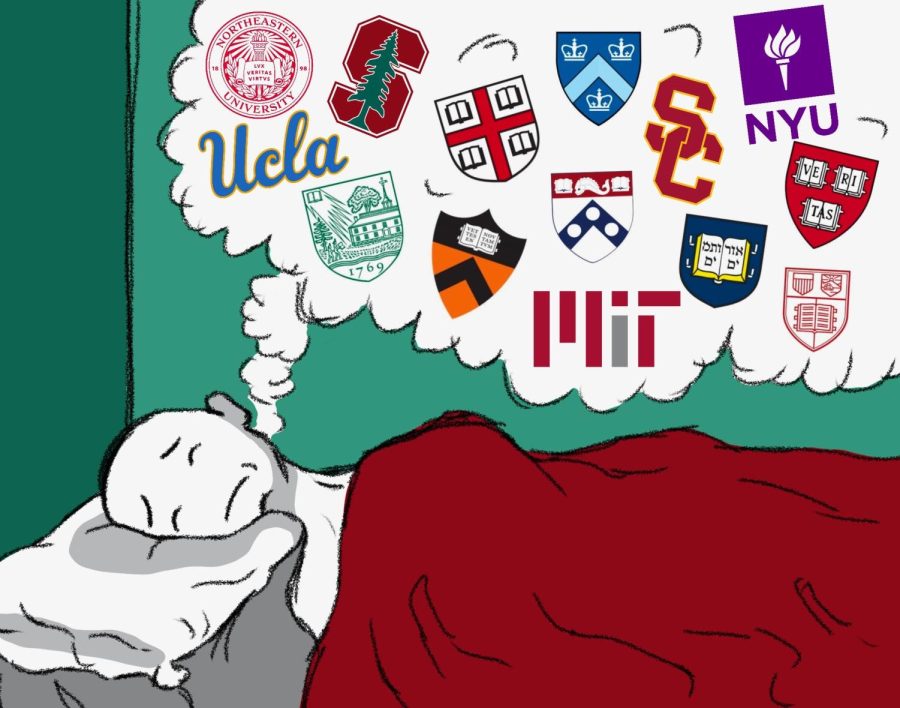In Your Dreams
The notion of a dream school can be detrimental when students lose perspective on the full picture of the college experience.
digital drawing by Morgan Nash
It is important to consider factors such as cost and location when choosing a college.
January 19, 2022
Whether it be a “Congratulations!” or a “We regret to inform you…” college decisions are right around the corner. Many students wait years for this exact moment, as this is the time they find out if they are accepted into the college of their dreams.
What they have been working towards for what seems like their entire life has finally come to fruition. For some students, their dream school’s merchandise has been hanging on the walls of their bedrooms since they were young.
But for me, the idea of having a “dream” school seems rather naïve.
I understand the feeling of belonging or just the pull a student may feel towards a school, but the prestige a school may carry has nothing to do with the experience I will have there.
At the same time, a goal to get into a certain college and fantasizing over a dream school are completely different concepts. Goals motivate you to better yourself. However, the build-up over a dream school can go far beyond a goal and even become detrimental.
Sometimes, the stars just don’t align and students get rejected from their dream school regardless of how qualified they are for acceptance. Fortunately, getting rejected from the school you had been dreaming about for years prior may actually be for the best. Rejection allows you to reevaluate the qualities of the certain school that pulled you in so much.
Most of the time, students are pressured into having a dream school based on its prestige or family legacy. However, other factors like cost, location, and academics should play a bigger role.
***
COST
Colleges are businesses, and our tuition and other extra costs are what pay their bills. Even if students get into their dream university, very rarely do they get enough aid or merit scholarships to pay for it. In fact, while more than 75% of students are admitted into their first choice, less than 57% end up enrolling in the school. At present, the average college tuition cost per year is between $11,000 and $40,000. This leads to many students having to pay off student debt well into their 30’s or having to work part-time while also attending school full-time.
LOCATION
Where you spend the next fours years of your life is a big deal. Weather, the social environment, and the opportunities at hand are all part of the location of a school. In many cases, the weather at a particular school is not a deal-breaker, but it can definitely change a student’s college experience. Sunnier climates and high-temperature schools have seen more productivity and energy in their student body compared to colleges high in humidity and gloomy days. Another factor that location determines is the social environment. The general vibe of a student body changes from college to college and can impact whether or not a student feels at home and comfortable at the university. Finally, depending on the location, a student may have better chances at finding internships and job opportunities. Many cities in the United States have headquarters of big companies that come searching for students from colleges located near them.
ACADEMICS
The academics of a school and the education it can provide you are extremely important to what your general experience will be like. Making sure a student can continue to be challenged and forced to learn while also not falling behind and struggling every year is a balance that is hard to find. Additionally, each school tends to have its own grading system and policies along with professors with their own specific teaching styles. Making sure you understand and like the academic environment is vital to a successful four years.
***
Fixating on one school and refusing to divert from it can lead to a lot of regret in the future. As students go through the college application process, it is essential that they keep their options open, do the necessary research, and make their commitment wholeheartedly.












